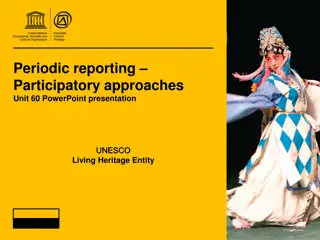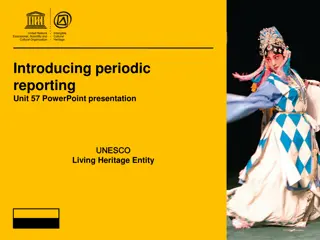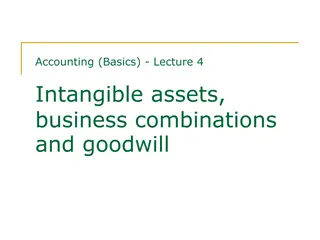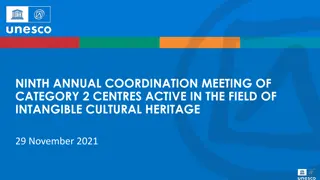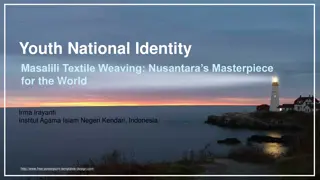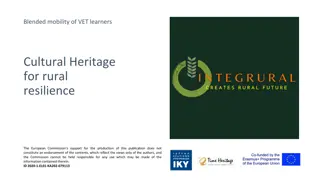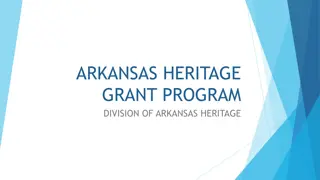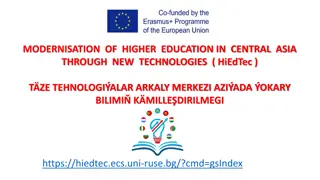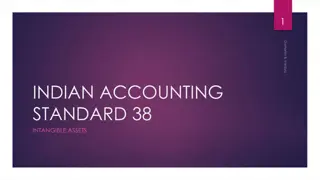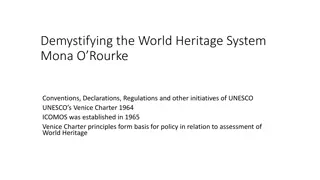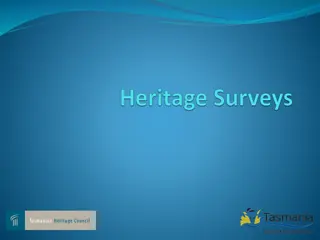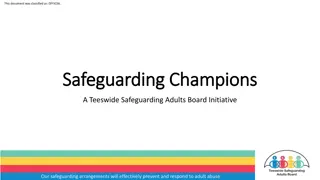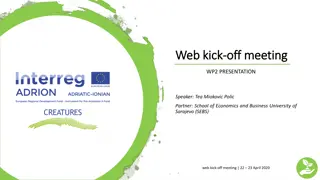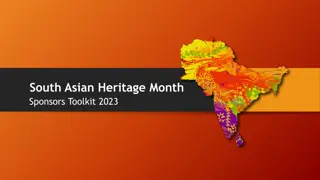Regional Research Centre for Safeguarding Intangible Cultural Heritage in West and Central Asia
The Regional Research Centre focuses on safeguarding intangible cultural heritage in West and Central Asia as per its geographical mandate. It carries out actions like networking, research, information dissemination, and capacity-building. The Centre's membership includes 11 member countries, with various participating and intending members. Main regional partners include UNESCO delegations, cluster offices, and government ministries. In 2016, key actions included capacity-building and awareness-raising efforts.
Download Presentation

Please find below an Image/Link to download the presentation.
The content on the website is provided AS IS for your information and personal use only. It may not be sold, licensed, or shared on other websites without obtaining consent from the author. Download presentation by click this link. If you encounter any issues during the download, it is possible that the publisher has removed the file from their server.
E N D
Presentation Transcript
Regional Research Centre for Safeguarding Intangible Cultural Heritage in West and Central Asia
Western and Central Asia - a geographical mandate Article 8 of the TICHCT Constitution: Considering the impossibility of defining the Intangible Cultural Heritage within official political borders of countries, due to its dynamic nature which contributes to its continuous propagation, the Centre will devote its activities to the geographical territory on which the, so called, West and Central Asian Culture exists
Four main lines of action of the Centre Networking and international cooperation Research and safeguarding Disseminating information, including best practices Training and capacity-building Encouraging community involvement
Membership of the TICHCT 11 Member Countries (Afghanistan, Turkey, Pakistan, Tajikistan, Kazakhstan, Kyrgyzstan, Iraq, Armenia, Palestine, Lebanon and Iran) 8 Participating Countries in Expert Meetings (Azerbaijan, Turkmenistan, Uzbekistan, Qatar, Kuwait, Indonesia, India and Bulgaria) 9 countries which have expressed an intention to become members (Oman, Georgia, Yemen, Saudi Arabia, UAE, Bahrain, Syria, Jordon and Azerbaijan)
Main regional partners Permanent Delegations of these countries to UNESCO Two UNESCO Cluster Offices (in Tehran and Kazakhstan) Government ministries through focal points in each Member Country Experts and officials in each country (including university/scientific institutions) Artists in the region ISESCO World Society of Islamic Cities (Qazvin, Iran) Inter-city Intangible Cultural Cooperation Network (ICCN) based in Republic of Korea.
2016: Some main actions undertaken Capacity-building (regional and national) Awareness-raising (national and international) Sharing information and experiences through regional and international meetings
Capacity-building Workshops Regional: Planned for Iraq and Afghanistan (security issues) Six-day workshop on NOM in Armenia National: 3-day workshop for staff of the Category 2 Centre and the Research Centre and Inscriptions Division of the Cultural Heritage Organization.
Awareness-raising Winter RitualsGathering First International Competition of the Tehran ICH Centre: photographic competition on Intangible Cultural Heritage in Context
Regional and International Meetings Meeting to develop a project on: Establishing Kinship Relations among ICH Elements and Local Communities in Western and Central Asia Expert meeting on: Safeguarding Intangible Cultural Heritage for Environmental Sustainability - Concrete Proposals on Harnessing Cultural Heritage for Environmental Sustainability with leading international experts (from the US, Germany, Japan, Australia, UK and India), experts from Member Countries (Kazakhstan, Tajikistan, Armenia and Turkey), representatives from the UNESCO and UNDP Offices in Tehran and Iranian governmental and scientific bodies. There were also two presentations from Iranian NGOs.
Meeting to develop a project on: Establishing Kinship Relations among ICH Elements and Local Communities in Western and Central Asia
Expert meeting on: Safeguarding Intangible Cultural Heritage for Environmental Sustainability Concrete Proposals on Harnessing Cultural Heritage for Environmental Sustainability
BROAD OUTLINES OF ACTIVITIES PLANNED FOR 2017-18 Publication on Safeguarding ICH in Central and Western Asia (online and print) ICH Enquirer Regional project on ICH-related Policy-making for Sustainable Development Furthering regional cooperation through strengthening cultural links via ICH Translating ICH Toolkits
Publication on Safeguarding ICH in Central and Western Asia Name of publication: ICH Enquirer Format: online and print Languages: Persian, English and Russian Research-based: Taking a broad notion of research and expertise Content: experiences of good safeguarding practices, cases studies and research into ICH safeguarding and its impacts
Regional project on ICH-related Policy- making for Sustainable Development Review of literature and preparation of the questionnaire: 6 months Survey period (sending out questionnaire and receiving responses): 4 months. Analysing the responses and preparing a follow-up meeting (including indentifying experts from the various member countries): 4 months Holding follow-up meeting and developing stage two of the project in partnership with participants in the follow-up meeting: 4 months Time for Stage 1: 18 months Conducting Stage two (project/pilot project) in a number of member countries (different sub-regions): 12 months Reporting on findings and holding a further follow-up meeting: 6 months Total time for Stage 2: 18 months Total time for Stages 1 and 2: 3 years
Furthering regional cooperation through cultural links Seek ways of developing better regional (and sub-regional) cooperation in the field of ICH and reducing the tensions that have built up around the RL nominations Increase the membership of the Centre and to bring together countries who have not traditionally had strong cooperation Develop stronger links based on shared cultural elements while respecting local and national specificities (e.g. Nowrouz Dolls project)


